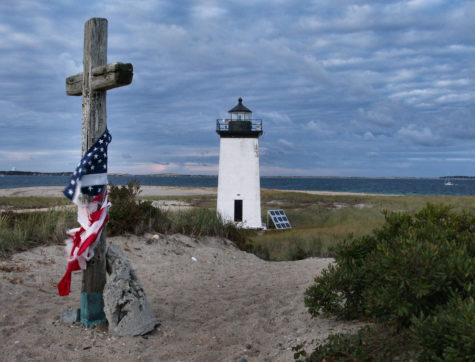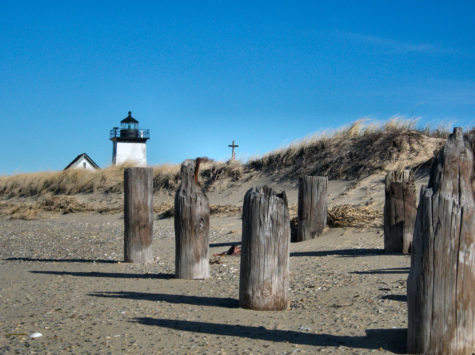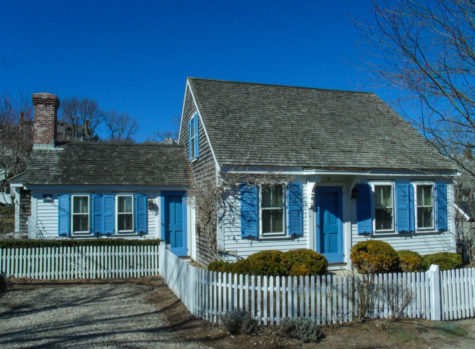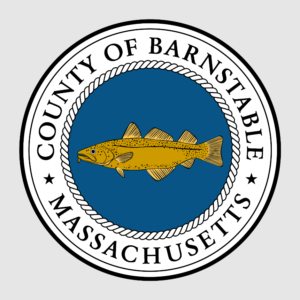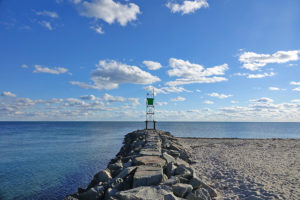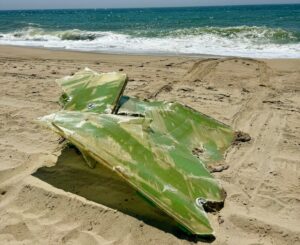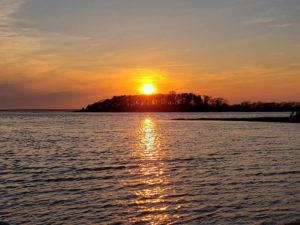Cape Cod’s shape is very much that of an arm extending out into the Atlantic Ocean from mainland Massachusetts. Chatham is the elbow with the forearm leading north the Provincetown which is shaped like a fist. Long Point is the name of the finger-shaped stretch of sand creating the western border of Provincetown Harbor. At the tip of the finger sits Long Point Lighthouse, one of the most remote locations on the entire Cape. For those hearty souls it is a 2 ¼ mile walk to the lighthouse from Provincetown’s West End. As desolate as Long Point is today it was at one point home to a bustling community and more nearly 200 years ago.
Being so close to the fertile fishing waters surrounding the tip of Cape Cod, Long Point became the perfect spot for fishermen to settle and create a village. The very first house on the point was built by John Atwood in 1818. Others followed shortly thereafter looking to haul in their share of the mackerel, shad, and bass swimming just offshore. In 1827 Long Point Lighthouse would be erected to help guide vessels into Provincetown Harbor. The current lighthouse is the second to be built at the site and was constructed in 1875.
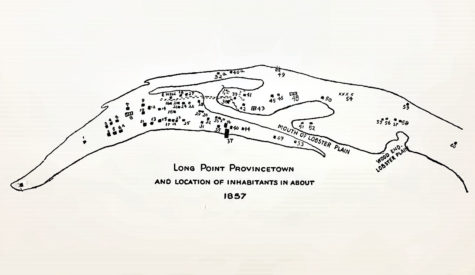
Sketch of the Long Point settlement layout taken from The Provincetown Book by Nancy W. Paine-Smith, 1922
More and more settlers came over from the town via the dunes of Race Point as it was the only means of getting to Long Point. The West End Breakwater which makes the journey easier was not built until 1915. This made the village on the sand quite remote. Despite that fishermen and their families kept coming and building houses. By 1846 a schoolhouse was needed for the children living on Long Point; this would also be used as the community’s church.
The blossoming village would continue to grow in the years following as a general store, post office, salt works, bakery, six windmills, and a wharf were built and the population of Long Point swelled to 200 people during the 1840’s. The peak of the community was short lived though.
It began to trend downward when in 1850 the salt works became less profitable when cheaper salt deposits were discovered in Syracuse, New York. The waters just offshore were being exhausted of their fish stocks causing many inhabitants to pack up and leave Long Point to go back into Provincetown. Some took their houses with them. These homes, known as ‘floaters’ were literally floated across the harbor on scows and assimilated into the town. Today they can be noted by a blue and white plaque on the front of the house. One such ‘floater,’ the former post office, sits at 256 Bradford Street.
The failing salt works and declining fishing numbers were only part of the problem. The remoteness of Long Point also caught up to the villagers. There were no roads from Long Point into town at the height of the settlement. In order to get to Provincetown a villager had to traverse the sand dunes north to Herring Cove Beach and back inland to town, a trip of four and a half miles. The population of the Long Point settlement plummeted throughout the 1850’s.
By 1861, the beginning of the American Civil War, only two houses and the lighthouse remained. It was at this time that Long Point received a second life as that of a Civil War battery. Men were stationed at the point and slept in barracks out there. One of the remaining houses became officer’s headquarters. One of the two earthen mounds created as part of the battery remains today; it is topped with a wooden cross in memorial of Charles Darby, a Provincetown man killed in action during World War II. When the war ended Long Point was deserted again.
The final chapter of Long Point’s story as a viable community came in 1875. The wharf which had been a part of the former fishing village was given a second life. Originally built by John Atwood it became part of the Cape Cod Oil Works, established by Jonathan Cook. The company’s purpose was to extract all that was usable from the carcasses of whales and fish. It was purchased by Lorenzo Richardson of Boston in 1885 after Cook’s death. He would change the name to the Cape Cod Oil Company in 1889.
Today only a few pilings from the wharf and skeletal remains of a brig hull are still visible along the eastern shore of Long Point. The lighthouse and cross stand as solitary reminders that generations ago there was a thriving village in an area which today is so remote.
By Christopher Setterlund




